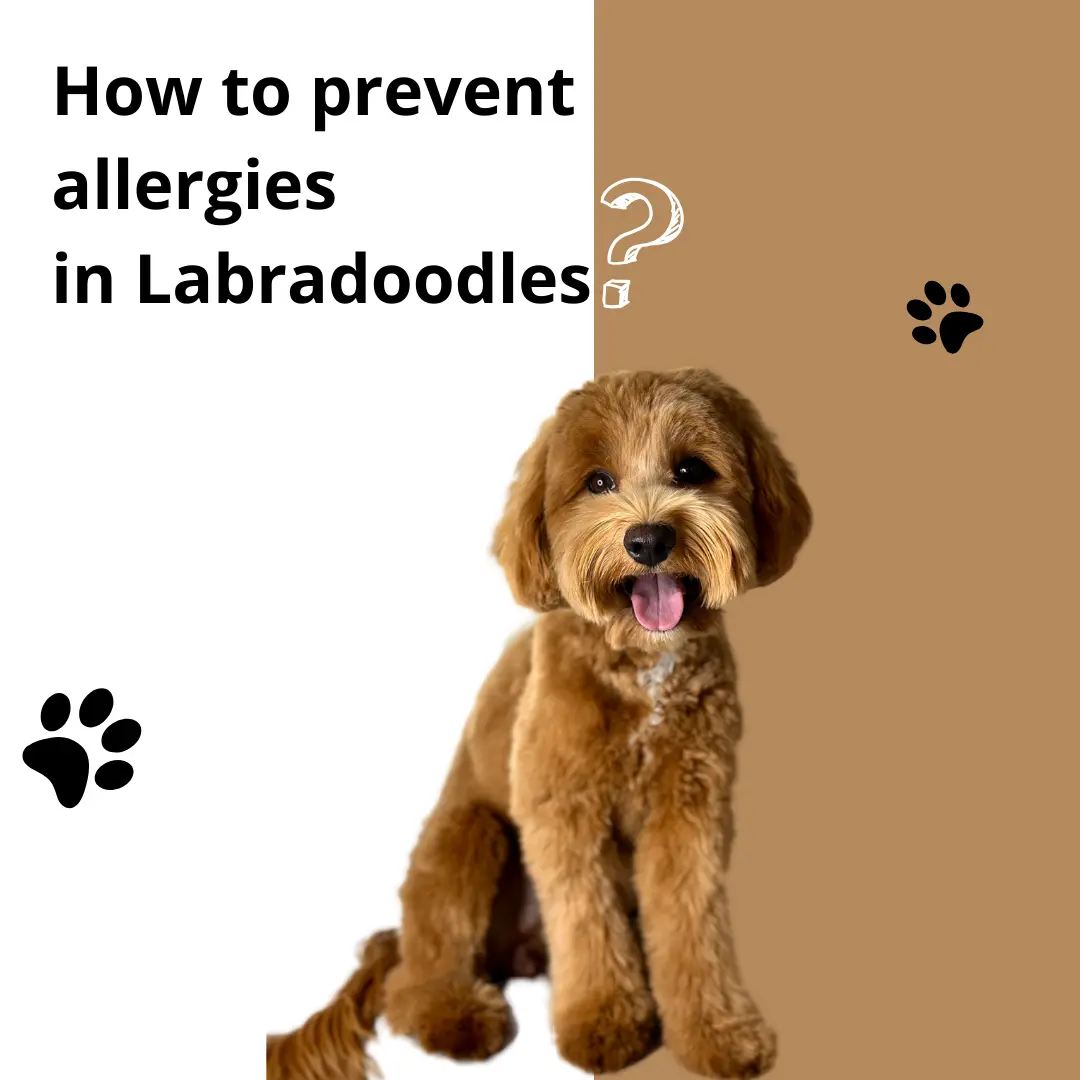Labradoodles are cherished for their affectionate personalities and low-shedding coats, often considered hypoallergenic. However, even Labradoodles can trigger or develop allergies under certain circumstances. Preventing allergies in Labradoodles requires a combination of proper grooming, a balanced diet, and maintaining a clean environment.
Regular Grooming: A Key to Allergy Prevention
Consistent grooming is essential for reducing allergens. Labradoodles’ unique coats, whether curly, wavy, or straight, can trap dander, pollen, and dust. Brush your Labradoodle at least once a week to minimize shedding and remove debris. For curly or denser coats, brushing more frequently prevents matting and reduces allergen buildup.
Bathing your dog every 4–6 weeks with a hypoallergenic shampoo can soothe sensitive skin and wash away irritants. Dry your dog thoroughly to avoid creating a damp environment conducive to bacterial or fungal growth. Regular professional grooming, including trimming the coat, also helps keep allergens under control.
Healthy Diet for Allergy Prevention
A nutritious diet plays a significant role in preventing allergies and maintaining healthy skin. High-quality dog food rich in omega-3 fatty acids supports skin health and reduces inflammation. Ingredients like salmon, duck, or sweet potatoes are often suitable for dogs with sensitive skin.
Avoid foods with fillers, artificial additives, or byproducts, as they can irritate your dog’s system. If you suspect a food allergy, consult your vet to determine the best diet. Fresh water is equally important, ensuring your Labradoodle stays hydrated, which promotes healthier skin and reduces the risk of dryness or irritation.
Clean Environment: Protecting Your Labradoodle and Family
A clean living space benefits both your Labradoodle and allergy-prone family members. Dogs often bring in outdoor allergens like pollen or dust, which can accumulate in the home. Vacuum carpets and furniture weekly using a vacuum with a HEPA filter, and mop hard floors to eliminate additional allergens.
Wash your Labradoodle’s bedding and blankets weekly in hot water to kill bacteria and dust mites. Cover pet-friendly furniture with washable covers to simplify cleaning. After walks, wipe your dog’s paws and coat with a damp cloth to remove outdoor allergens before they settle indoors.
Air purifiers can further reduce allergens, and keeping windows closed during pollen-heavy seasons minimizes airborne irritants. These steps collectively create a healthier environment for everyone.
Regular Veterinary Care: Prevention is Better Than Cure
Regular checkups with your vet are vital to identifying and addressing potential allergy issues early. Discuss any signs of allergies, such as itching, redness, or hair loss. Early intervention can prevent minor issues from escalating.
Your vet may recommend supplements, medicated shampoos, or other treatments to support your Labradoodle’s skin health. Additionally, ensure your dog is protected against fleas and ticks, as their bites can trigger severe allergic reactions and secondary infections.
Identifying Allergies in Labradoodles
If your Labradoodle shows signs of allergies, identifying the trigger is crucial. Food allergies may manifest as gastrointestinal issues or skin irritations, while environmental allergies often cause itching or sneezing. Dog dander, pollen, or certain grooming products are common culprits for allergy-prone owners.
For food-related allergies, an elimination diet under veterinary supervision can pinpoint problematic ingredients. For environmental triggers, your vet may suggest antihistamines, allergy testing, or immunotherapy to manage symptoms effectively.
Understanding the “Hypoallergenic” Myth
While Labradoodles are marketed as hypoallergenic due to their low-shedding coats, no dog breed is completely free of allergens. Labradoodles produce less dander compared to other breeds, but individual factors such as coat type and grooming frequency influence allergen levels.
If you or a family member has allergies, spend time with a Labradoodle before committing. This interaction can help determine if the breed is suitable for your household.
Building an Allergy-Friendly Routine
Creating a routine to minimize allergens ensures a comfortable living environment. Establish pet-free zones, like bedrooms, to reduce exposure. Wash your hands after handling your Labradoodle or their belongings and encourage guests to do the same.
Opt for hypoallergenic products, including shampoos, toys, and bedding, designed to be gentle on your dog’s skin and reduce allergen buildup. Regular adherence to these practices keeps both you and your Labradoodle healthier and happier.
Conclusion: A Holistic Approach to Allergy Prevention
Preventing allergies in Labradoodles requires a proactive and holistic approach. Through regular grooming, a balanced diet, a clean environment, and routine veterinary care, you can minimize allergens and keep your Labradoodle thriving. These efforts foster a harmonious bond between you and your furry companion, ensuring a healthy and enjoyable life together.



